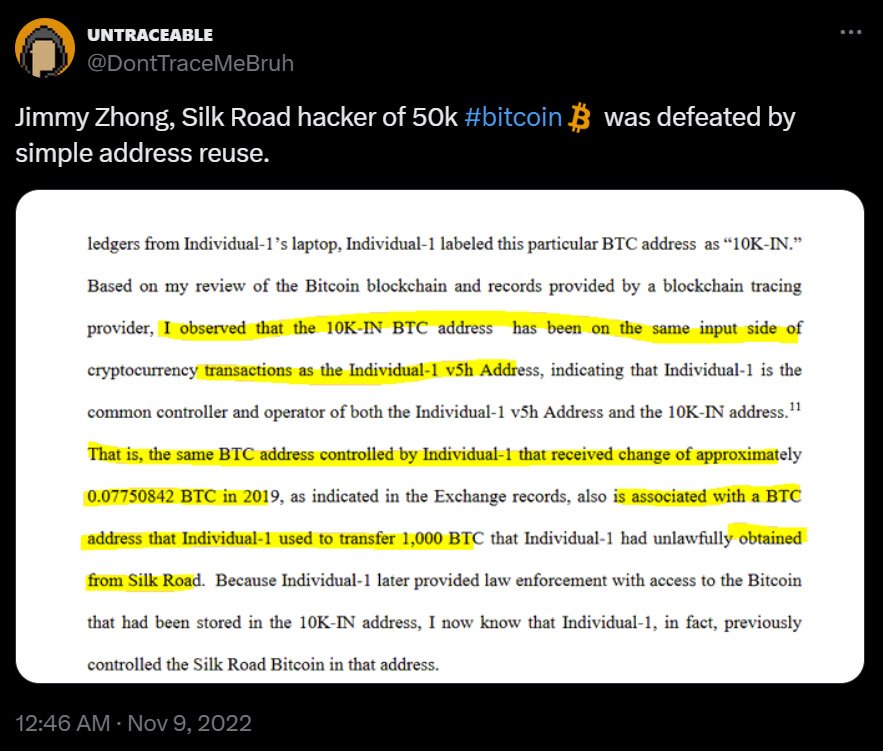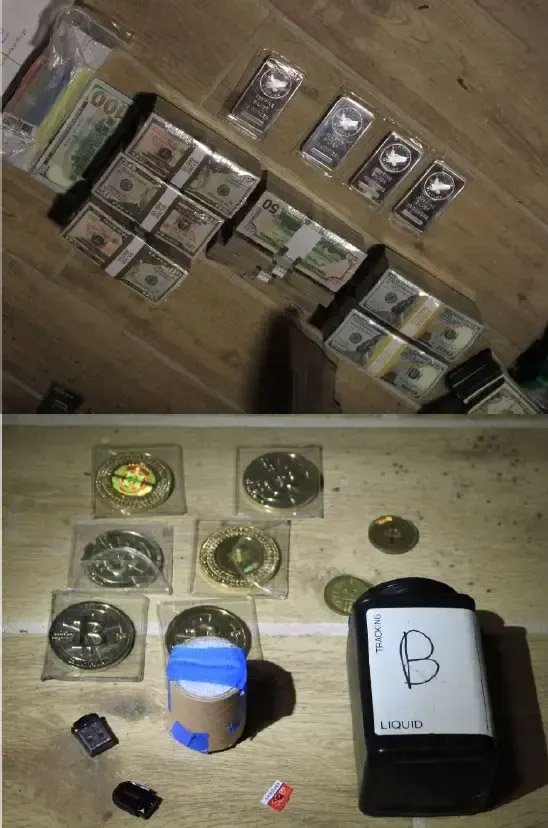Jimmy Zhong, once a seemingly innocuous university student, orchestrated one of the most audacious thefts in the history of digital assets, embezzling a fortune in bitcoin from the notorious Silk Road marketplace.
Jimmy Zhong bitcoin theft, which initially involved stealing 50,000 bitcoin in 2012, has cast a long shadow over Zhong’s life, leading to his eventual capture and conviction.
“James ‘Jimmy’ Zhong is an American man who was convicted in 2022 for stealing over 51,680 bitcoin.
Zhong, who was closely monitoring the early development of bitcoin, had found an error on Silk Road that allowed him to withdraw more funds than what was initially deposited.
This was activated by repeatedly double clicking the withdraw button, and further abused by using multiple accounts on the website.”
– Jimmy Zhong on Wikipedia
Jimmy Zhong’s life story is one of contrasts and contradictions. Originally from China, he came to the United States to study, enrolling at the University of Georgia.
Portraying himself as a well-off international student, Zhong lived a life that was outwardly glamorous but inwardly turbulent. He struggled with personal demons, grappling with issues like being bullied, obesity, substance abuse, and an undiagnosed autism spectrum disorder.
These challenges, combined with the pressures of academic life and the isolation often felt by international students, painted a picture of a young man on the brink of a precipitous fall.
Jimmy Zhong’s Entry into the World of Silk Road
The turning point in Zhong’s life came in 2012, at the age of 22, when he engaged with the dark web marketplace Silk Road. Rather than using the platform as it was intended—anonymous transactions for goods and services—Zhong saw an opportunity to exploit its systems.
His computer skills enabled him to manipulate the withdrawal process, allowing him to siphon off 50,000 bitcoin by creating a series of fraudulent transactions that deceived the marketplace’s security mechanisms.

“In September 2012, ZHONG executed a scheme to defraud Silk Road of its money and property by (a) creating a string of approximately nine Silk Road accounts (the “Fraud Accounts”) in a manner designed to conceal his identity;
triggering over 140 transactions in rapid succession in order to trick Silk Road’s withdrawal-processing system into releasing approximately 50,000 Bitcoin from its Bitcoin-based payment system into ZHONG’s accounts;
and transferring this Bitcoin into a variety of separate addresses also under ZHONG’s control, all in a manner designed to prevent detection, conceal his identity and ownership, and obfuscate the Bitcoin’s source.”
– Southern District of New York — Justice.gov
Jimmy Zhong Bitcoin Life Style
After orchestrating the Silk Road heist in 2012, Jimmy Zhong’s lifestyle reflected the vast fortune he had acquired.
Masquerading as a wealthy student living near the University of Georgia, he spent his days enjoying parties and cultivating an image of affluence. With access to tens of thousands of bitcoin, Zhong indulged in luxuries that many would consider out of reach.

He meticulously laundered the stolen bitcoin through multiple accounts to obfuscate their origins. This allowed him to continue living comfortably for nearly a decade, moving his wealth through various addresses under his control.
As bitcoin gained value, Zhong’s assets grew substantially. The 2017 Bitcoin fork increased his holdings further, giving him an additional 50,000 Bitcoin Cash coins, which he then converted to Bitcoin.
Subsequent Arrest
Zhong maintained his lavish lifestyle with extravagant spending while keeping a relatively low profile, especially after his home was burglarized in 2019. Despite the wealth he enjoyed, paranoia crept in, leading to heightened security measures at his residence.
Following the heist, Zhong attempted to return to the semblance of a normal life, masking his gains through complex networks of Bitcoin transactions intended to launder the stolen funds.
His life of luxury, funded by the heist, continued unnoticed for almost a decade.
However, this came to a crashing halt when he reported a theft from his own home in 2019—a call that led to his eventual arrest and conviction. The irony of his downfall being triggered by his attempt to seek justice for a personal loss was not lost on observers.

The most startling discovery was the seizure of 50,676 bitcoin, worth over $3.36 billion at the time, marking one of the largest bitcoin confiscations ever.
Alongside the bitcoin, authorities found $661,900 in cash, various precious metals, and Casascius physical bitcoin. This investment provided a glimpse into how Zhong had diversified his stolen bitcoin wealth over time, hinting at elaborate laundering efforts.

Further emphasizing the lengths to which he went to conceal his ill-gotten gains, agents uncovered a piece of computer hardware containing stolen bitcoin, hidden in unusual places. For instance, a portion of the bitcoin was ingeniously stored on a circuit board, which was itself cleverly stashed within a popcorn tin.

Conclusion of a Billion-Dollar Case
In 2012, Zhong exploited a vulnerability in the Silk Road marketplace, fraudulently acquiring 50,000 bitcoin. This allowed him to live a luxurious life for nearly a decade.
In November 2021, law enforcement seized 50,676 bitcoin from Zhong’s residence, valued at over $3.74 Billion at the time of writing, making it one of the largest bitcoin confiscations ever. They also found $661,900 in cash and significant real estate investments.
Zhong pleaded guilty to wire fraud and was sentenced to one year and one day in prison. Zhong forfeited the assets as part of his plea deal. The U.S. government began liquidating the bitcoin to fund law enforcement activities.










